Construction of a Simple Domeless Net Radiometer for Demonstrating Energy Balance Concepts in a Laboratory Activity
Abstract
:1. Introduction
2. Materials and Methods
2.1. Theory
2.2. Disc Construction
2.3. Proposed Laboratory Activity
3. Results and Discussion
4. Questions to Students
- Would you expect to see higher surface temperatures under sunny or cloudy conditions?
- Would you expect to see higher surface temperatures under high or low wind speeds?
- If instead of parallel to the surface, the disc was mounted in a way such that it was perpendicular to the surface with its black surface facing west and its white surface facing east, during what part of the day would you expect to see the peak temperature of the black surface? What about for the white surface?
- How paints of different colors (different albedos) would affect the temperature of the disc?
- How paints of different emissivities would affect the temperature of the disc?
- How different diameters would affect the temperature of the disc?
5. Summary and Conclusions
Author Contributions
Funding
Institutional Review Board Statement
Informed Consent Statement
Acknowledgments
Conflicts of Interest
References
- Campbell, G.S.; Norman, J.M. An Introduction to Environmental Biophysics, 2nd ed.; Springer: New York, NY, USA, 1998. [Google Scholar]
- Monteith, J.L.; Unsworth, M.H. Principles of Environmental Physics, 4th ed.; Academic Press: London, UK, 2013. [Google Scholar]
- Suomi, V.E.; Franssila, M.; Islitzer, N.F. An Improved Net-Radiation Instrument. J. Atmos. Sci. 1954, 11, 276–282. [Google Scholar] [CrossRef] [Green Version]
- Suomi, V.E.; Kuhn, P.M. An Economical Net Radiometer. Tellus 1958, 10, 160–163. [Google Scholar] [CrossRef]
- Fritschen, L.J.; van Wijk, W.R. Use of an Economical Thermal Transducer as a Net Radiometer. Bull. Am. Meteorol. Soc. 1959, 40, 291–294. [Google Scholar] [CrossRef]
- Fritschen, L.J. Construction and Calibration Details of the Thermal-Transducer Type Net Radiometer. Bull. Am. Meteorol. Soc. 1959, 41, 180–183. [Google Scholar] [CrossRef] [Green Version]
- Funk, J.P. Improved Polythene-Shielded Net Radiometer. J. Sci. Instrum. 1959, 36, 267–270. [Google Scholar] [CrossRef]
- Tanner, C.B.; Businger, J.A.; Kuhn, P.M. The Economical Net Radiometer. J. Geo. Res. 1960, 65, 3657–3667. [Google Scholar] [CrossRef]
- Funk, J.P. A Net Radiometer Designed for Optimum Sensitivity and a Ribbon Thermopile Used in a Miniaturized Version. J. Geo. Res. 1962, 67, 2753–2760. [Google Scholar] [CrossRef]
- Fritschen, L.J. Construction and Evaluation of a Miniature Net Radiometer. J. Appl. Meteorol. 1963, 2, 165–172. [Google Scholar] [CrossRef] [Green Version]
- Campbell, G.S.; Ashcroft, G.L.; Taylor, S.A. Thermistor Sensor for the Miniature Net Radiometer. J. Appl. Meteorol. 1964, 3, 640–642. [Google Scholar] [CrossRef] [Green Version]
- Fritschen, L.J. Miniature Net Radiometer Improvements. J. Appl. Meteorol. 1965, 4, 528–532. [Google Scholar] [CrossRef]
- Norman, J.M.; Blad, B.L.; Baker, D.G. Rain Correction Modification for a Non-Shielded Net Radiometer. J. Appl. Meteorol. 1966, 5, 730–733. [Google Scholar] [CrossRef] [Green Version]
- Fritschen, L.J.; Gay, L.W. Environmental Instrumentation; Springer: New York, NY, USA, 1979. [Google Scholar]
- Tanner, C.B. Basic Instrumentation and Measurements for Plant Environment and Micrometeorology; Soils Bulletin 6; University of Wisconsin: Madison, WI, USA, 1963. [Google Scholar]
- Perrier, A. Leaf Temperature Measurement. In Plant Photosynthetic Production, Manual of Methods; Sestak, Z., Catsky, J., Jarvis, P.G., Eds.; W. Junk: The Hague, The Netherlands, 1971; pp. 632–669. [Google Scholar]
- Bell, C.J.; Rose, D.A. The Measurement of Temperature. In Instrumentation for Environmental Physiology; Marshall, B., Woodward, F.I., Eds.; Cambridge University Press: Cambridge, UK, 1985; pp. 79–95. [Google Scholar]
- Schooley, J.F. Thermometry; CRC Press: Boca Raton, FL, USA, 1986. [Google Scholar]
- Ehleringer, J.R. Temperature and Energy Budgets. In Plant Physiological Ecology, Field Methods and Instrumentation; Pearcy, R.W., Ehleringer, J., Mooney, H.A., Rundel, P.W., Eds.; Kluwer Academic Publishers: Boston, MA, USA, 1989; pp. 117–134. [Google Scholar]
- American Society for Testing and Materials. Manual on the Use of Thermocouples in Temperature Measurement, 4th ed.; ASTM: Philadelphia, PA, USA, 1993. [Google Scholar]
- Brock, F.V.; Richardson, S.J. Meteorological Measurement Systems; Oxford University Press: New York, NY, USA, 2001. [Google Scholar]
- McInnes, K.J. Temperature. In Methods of Soil Analysis, Part 4, Physical Methods; Topp, G.C., Dane, J.H., Eds.; SSSA: Madison, WI, USA, 2002; pp. 1183–1199. [Google Scholar]
- Novak, M.D. Soil Temperature. In Micrometeorology in Agricultural Systems; Hatfield, J.L., Baker, J.M., Eds.; ASA-CSSA-SSSA: Madison, WI, USA, 2005; pp. 105–129. [Google Scholar]
- Harrison, R.G. Meteorological Instruments and Instrumentation; John Wiley & Sons: Oxford, UK, 2015. [Google Scholar]
- Slatyer, R.O.; McIIroy, I.C. Practical Microclimatology; CSIRO Plant Industry Division: Canberra, Australia, 1961. [Google Scholar]
- Woodward, F.I.; Sheehy, J.E. Principles and Measurements in Environmental Biology; Butterworths: Boston, MA, USA, 1983. [Google Scholar]

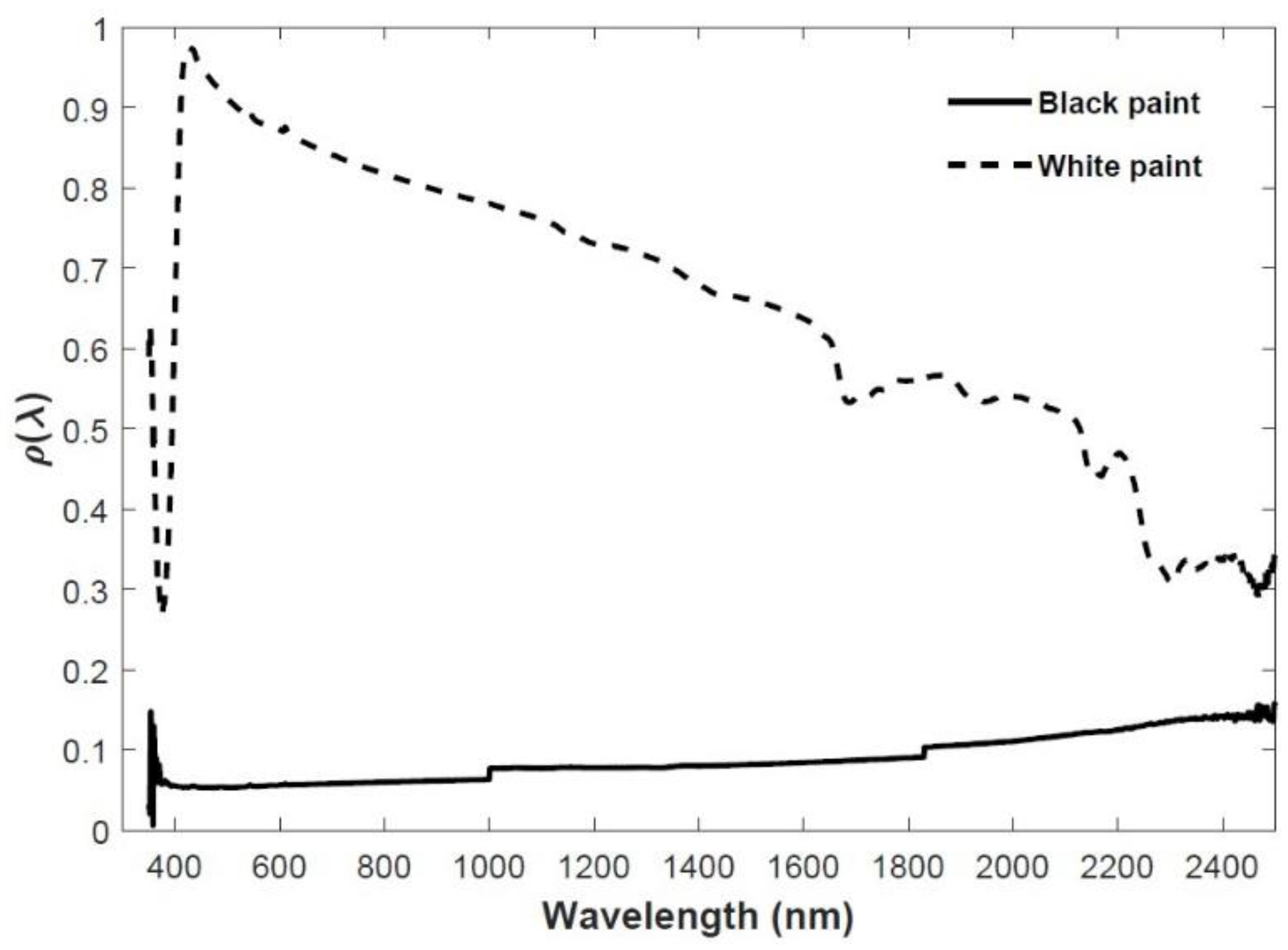
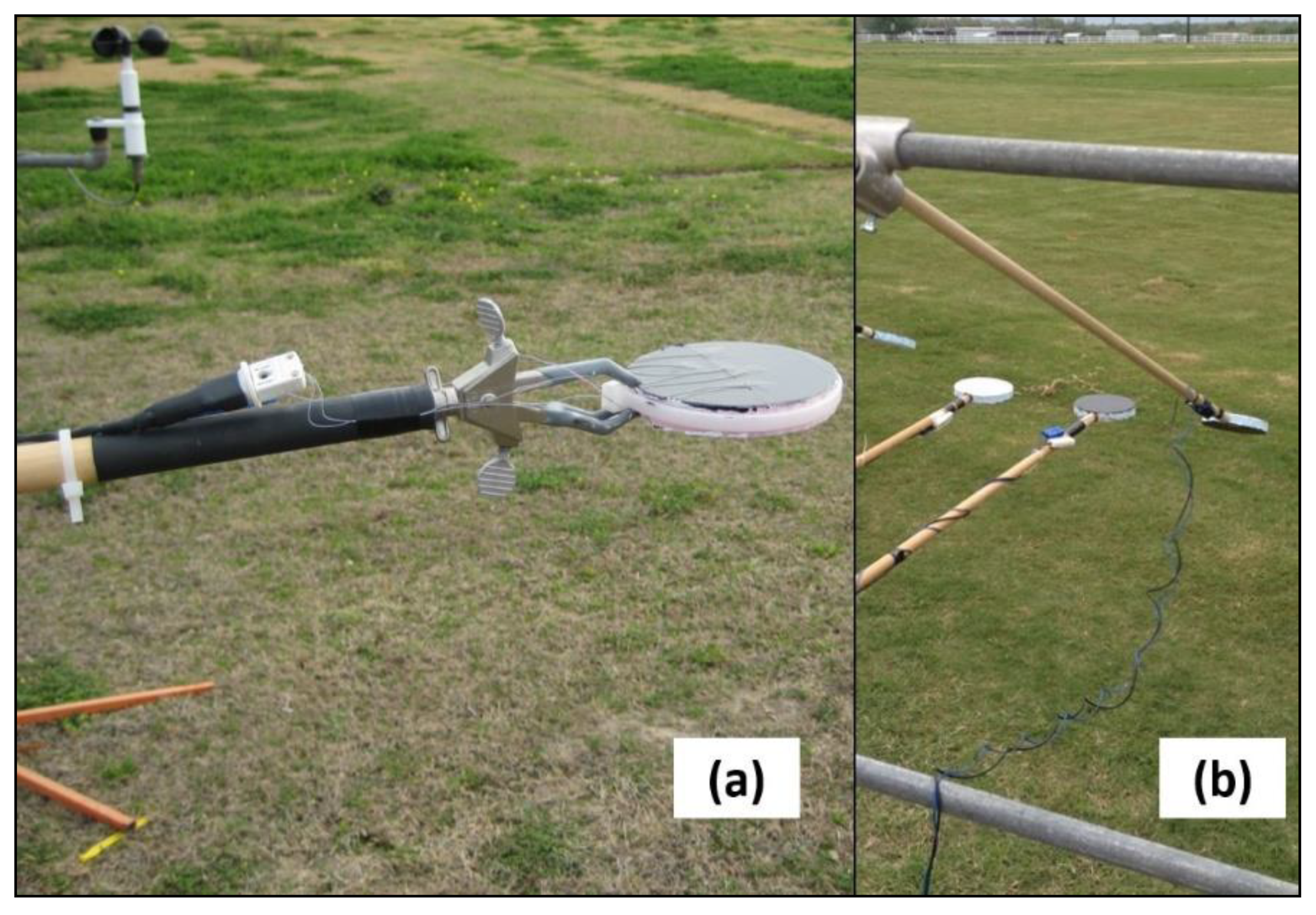
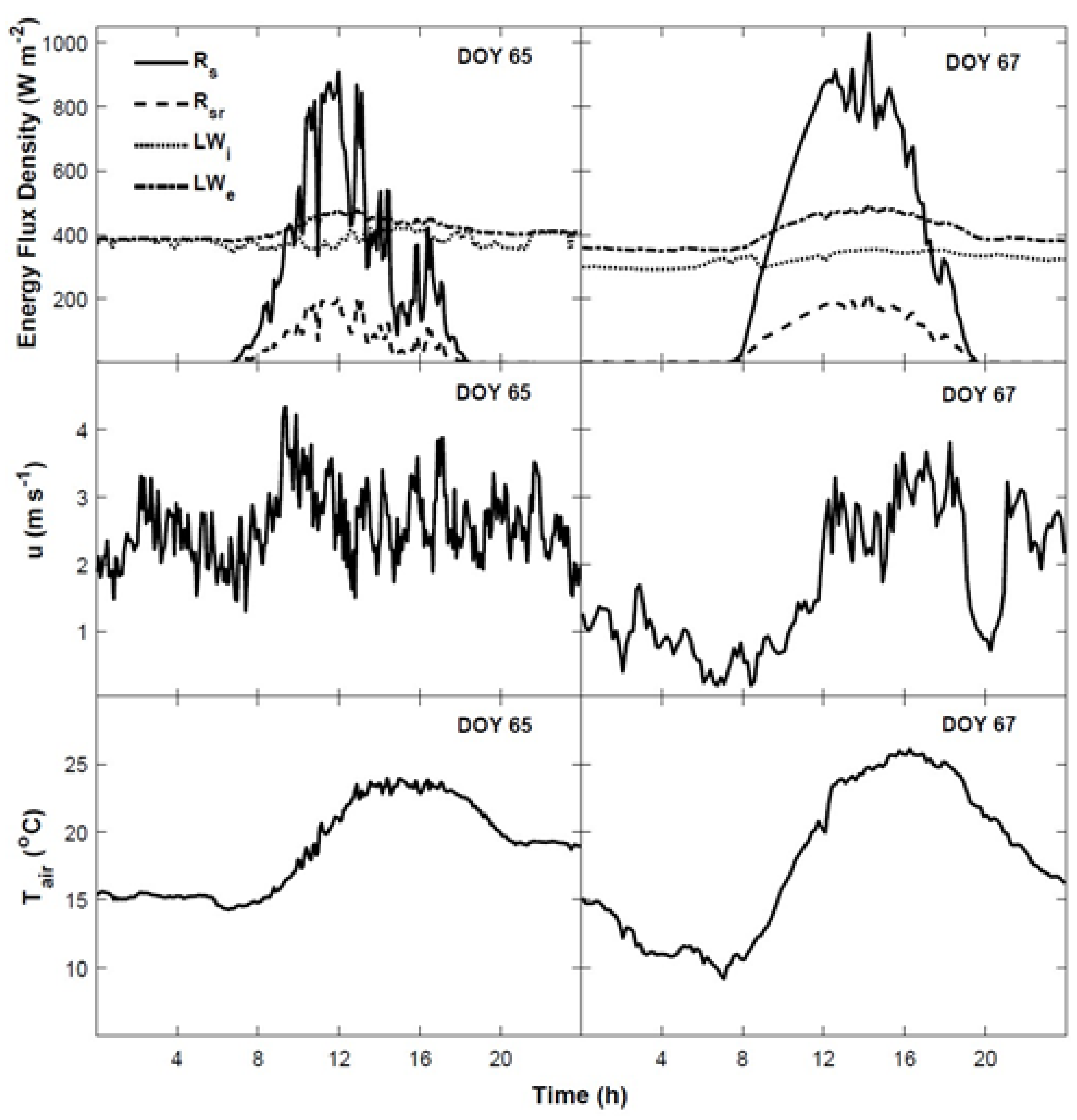
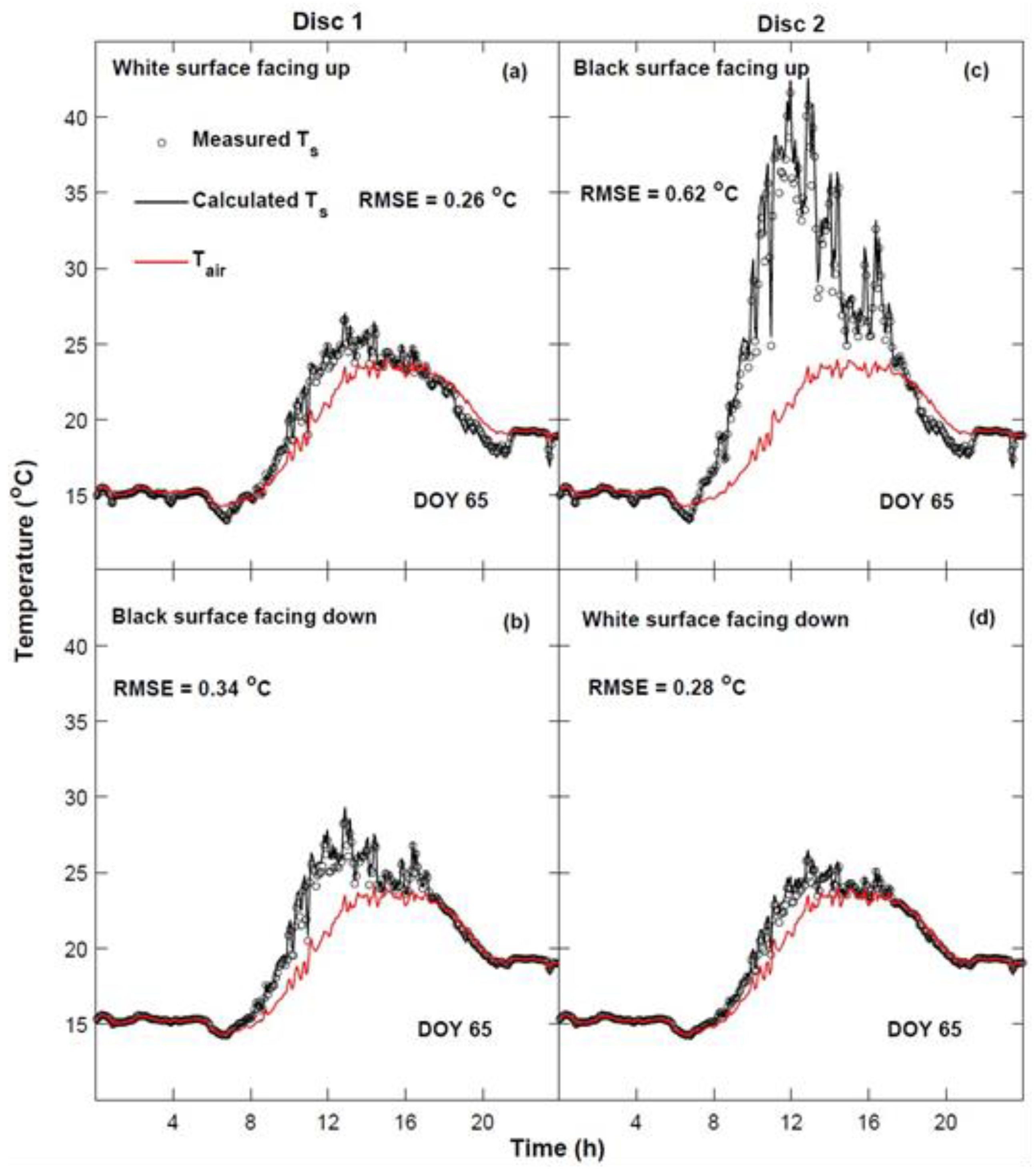
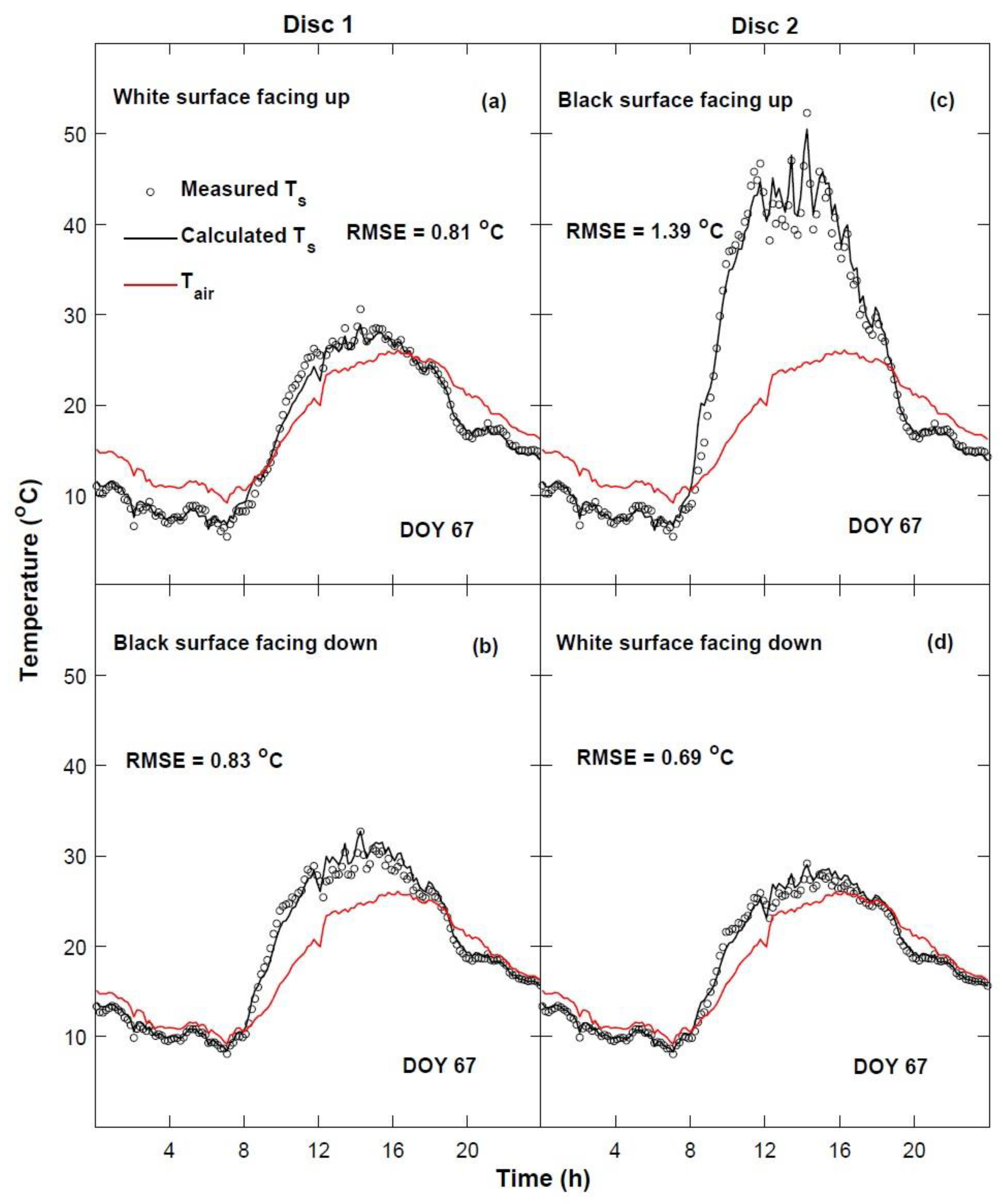
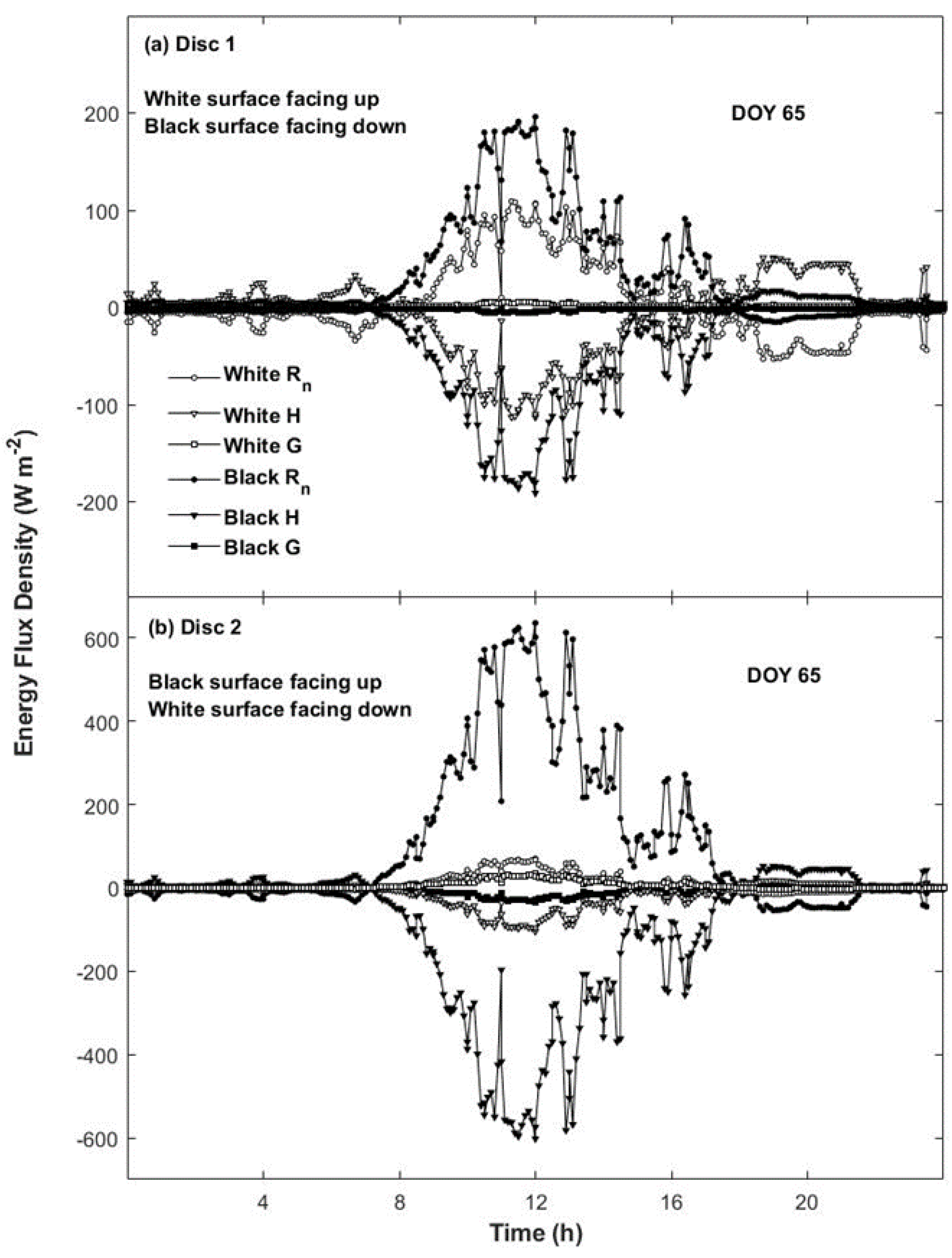
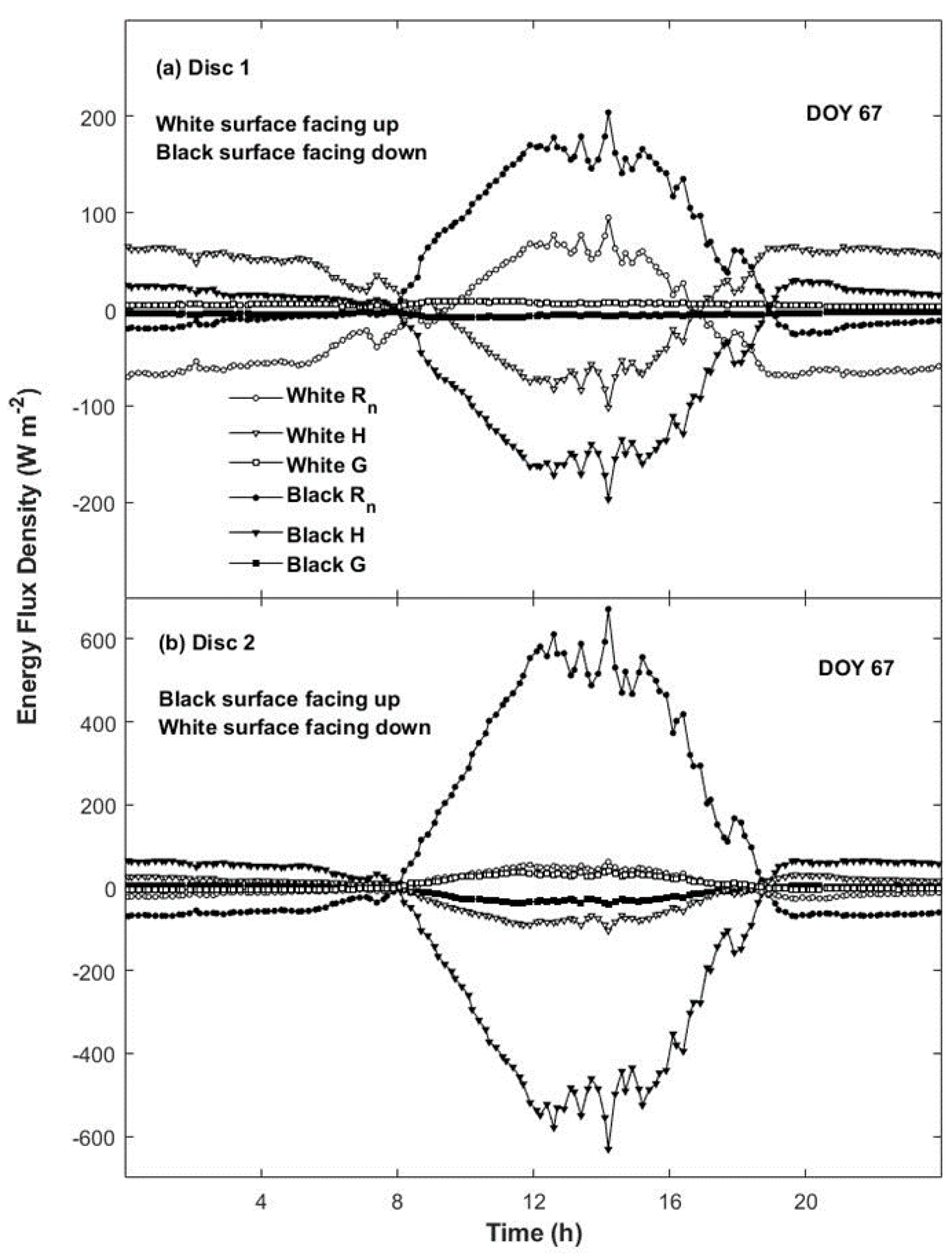
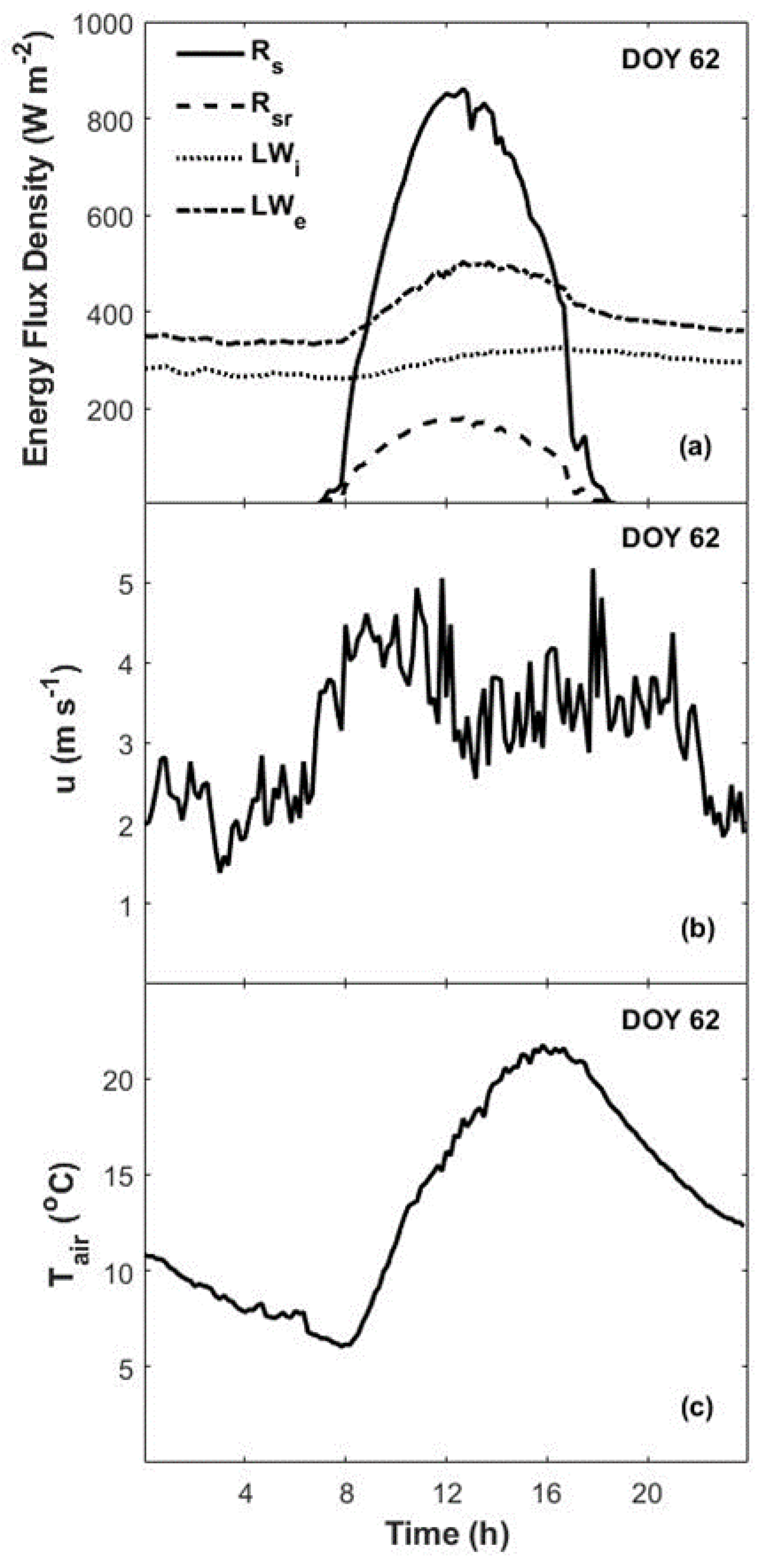

Publisher’s Note: MDPI stays neutral with regard to jurisdictional claims in published maps and institutional affiliations. |
© 2021 by the authors. Licensee MDPI, Basel, Switzerland. This article is an open access article distributed under the terms and conditions of the Creative Commons Attribution (CC BY) license (https://creativecommons.org/licenses/by/4.0/).
Share and Cite
Da Ros Carvalho, H.; McInnes, K.J.; Heilman, J.L. Construction of a Simple Domeless Net Radiometer for Demonstrating Energy Balance Concepts in a Laboratory Activity. Atmosphere 2021, 12, 1620. https://doi.org/10.3390/atmos12121620
Da Ros Carvalho H, McInnes KJ, Heilman JL. Construction of a Simple Domeless Net Radiometer for Demonstrating Energy Balance Concepts in a Laboratory Activity. Atmosphere. 2021; 12(12):1620. https://doi.org/10.3390/atmos12121620
Chicago/Turabian StyleDa Ros Carvalho, Henrique, Kevin J. McInnes, and James L. Heilman. 2021. "Construction of a Simple Domeless Net Radiometer for Demonstrating Energy Balance Concepts in a Laboratory Activity" Atmosphere 12, no. 12: 1620. https://doi.org/10.3390/atmos12121620
APA StyleDa Ros Carvalho, H., McInnes, K. J., & Heilman, J. L. (2021). Construction of a Simple Domeless Net Radiometer for Demonstrating Energy Balance Concepts in a Laboratory Activity. Atmosphere, 12(12), 1620. https://doi.org/10.3390/atmos12121620




